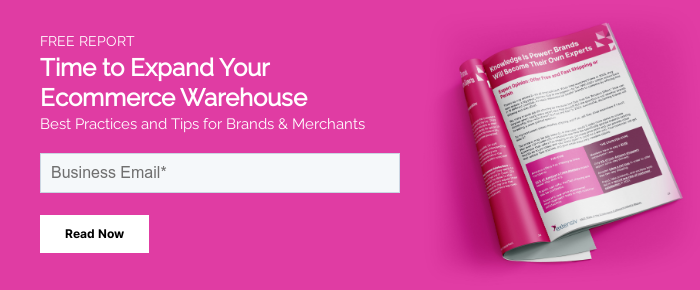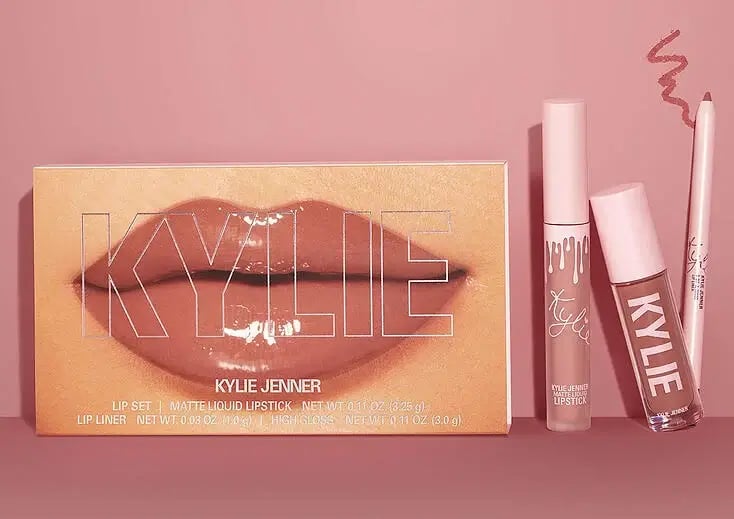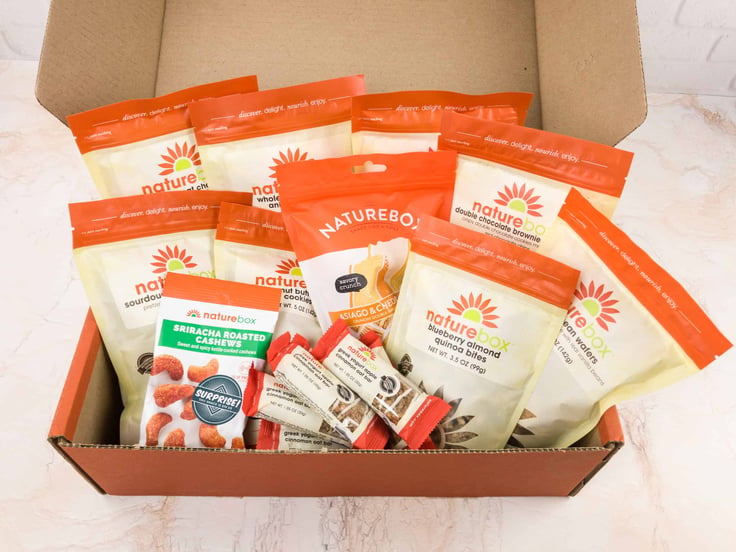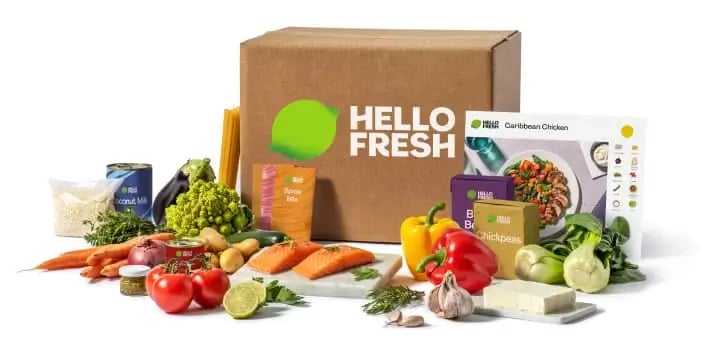Product bundling is a popular way for ecommerce merchants to sell more of their products, and in turn, steadily increase their profits. This article discusses the psychology behind bundling, a few tips we've learned from industry experience, and examples of brands who do it well.
If you’d like to learn more about the best product bundling strategies, what mistakes to avoid, and which online stores and direct-to-consumer ecommerce brands are effectively utilizing such selling techniques, then read on.
But first, let's start with a quick definition.
What is Product Bundling?
Product bundling is the term for several individual goods or services sold together as a combined package at a lower price than if they were sold individually. Common examples of product bundles are value meals at restaurants, beach kits, or shampoo and conditioner sets. Some brands only sell certain best-seller inventory as part of a bundle rather than individually in order to encourage consumers to try complementary products with their best-sellers.
The Psychology of Product Bundling & Sales
Mixed product bundling occurs when a brand combines popular items sold separately into a packaged set, along with a discounted price. This way, shoppers can purchase one or two items individually, or opt to buy multiple products bundled together.
Let’s explore why this strategy works for your bottom line, and how to incorporate it with your existing marketing strategies.
A study done by Vineet Kumar, of Harvard Business School, discovered that when Nintendo used mixed bundling to market video game units, sales of these units went up by 100,000 (and video game sales increased by more than a million, as well).
Conversely, when Nintendo tried pure bundling — wherein customers were forced to buy the bundled package only — their sales declined by 20%, and they saw decreased sales for both video game consoles and the games themselves.
With these numbers in mind, it’s clear the secret sauce to product bundling is finding the right mix for your bundled package, or to implement mixed bundling. But in order to find the right mix, you first need to know about customer value perception.
This phrase refers to the value a customer puts into the goods you’re selling; in general, customers favor products they value, and consistently go for products that seem ‘worth it.’ Because of this perceived value, the products in your bundle offers should all hold weight for the buyer, and be at a reduced price when purchased together rather than individually.
Which Products Can Be Bundled?
When considering which of your products to bundle, the best approach is to add goods that complement one another or can be used together, as was true for Nintendo's consoles and games package. Your product bundles have to make sense, so if you’re selling a computer, you’d be wise to include something like a free USB cable or screen cleaner.
Another practical tip is to find out what customers want directly from the customers themselves. This is especially important within ecommerce, since bundles can help you outshine your competitors.
With the help of customer data and product performance analytics, you can see what products a person is buying. Moreover, you can even track the different products they frequently purchase to learn which products might make sense together in terms of cross-selling.
If you notice Shopper A bought a bottle of shampoo from your store, and they ordered a hair spa treatment you sell, this data shows you can successfully bundle these products together. To leverage this data further, find something that allows you to incorporate full-suite ecommerce analytics to provide better insights, and to measure the full performance of your A/B tests.
3 Benefits of Product Bundling

Product bundling is an effective pricing strategy, as well as a compelling way to upsell and cross-sell a range of products. The following are three of the greatest benefits of bundling, all of which can have a positive impact on your business and its bottom line.
Generate more sales
Every customer has an amount they're willing to pay for a product; the difference between that price and what they actually pay is known as the consumer surplus. Product bundling is an effort to capture the maximum amount of this surplus, making customers feel like they’re getting products at a steal, and making their buying journey much easier, as well.
But it’s not just consumers who benefit from bundling, as retailers also reap the rewards of individual products being packaged together. That’s because with bundles, customers are more likely to spend a lump sum upfront, rather than purchasing items over an extended period of time and perhaps from multiple marketplaces or locations.
What’s more, bundling helps you increase sales revenue by increasing the average order value, a significant metric for the success and growth of your company. Bundling strategies boost total revenue by increasing the AOV and amount spent on each transaction since multiple items will still cost more than a single product (even when promotional price points are in effect).
Save on marketing & distribution
Product bundling can save you a great deal of money on marketing and distribution since a key component of any bundling strategy is receiving a higher initial return on the cost of acquiring a customer. Similarly, companies who implement bundling worry less about customer return or retention. When a larger purchase is made on one visit to your site, it alleviates the pressure to draw customers back to whatever individual items remain in their cart.
When done correctly, product bundling also keeps inventory moving at a steady rate, instead of sitting stagnant and unsold in your warehouse. Products whose sales have slowed can get a much-needed boost when paired with relevant, sales-driving items — then, you can develop bundle pricing to increase the appeal of the newly paired goods.
Another approach to improve your inventory turnover ratio is to package certain quantities of dead stock at a lower price (that still turns a profit). And if this bundle is exclusively available to customers who’ve purchased the product in the past, it increases the desirability of those goods and helps speed up inventory clearance to create valuable storage space. Plus, retailers who offer package deals often run out of the bundled products at the same time, making restocking and general inventory management more straightforward.
Simplify the customer experience
In addition to generating more sales and saving you money, product bundling is a practical way to simplify the customer experience. Customers have the opportunity to choose products or services that have been grouped with their needs in mind, and when they’re able to remove, add-on, or edit products from the base bundle, it can spike satisfaction even more.
Product bundling can relieve the headache that comes from decision-making, as well. While shoppers appreciate having choices, too many options can cause them to feel overwhelmed. Online retailers who set up customized recommendations (using product-consumer matching algorithms) can direct customers toward the types of products they’re likely to be interested in. This tactic not only relieves buyer fatigue, but it helps you close the sale at the same time.
Lastly, bundled offers help customers to better understand your products, since they’re likely to review or read up on each item within the collective package. With this knowledge, customers have increased confidence in their purchase, since they feel invested in the decision and more in control of their purchasing power.
5 Metrics to Determine Which Products You Should Bundle

To create product bundles that resonate with your customers, you'll first need to gather as much information as you can. Using buyer persona templates is a nice place to start, but ideally, you'll be leveraging advanced analytics to collect more in-depth data.
Here are five of the most applicable product metrics you can track to stay ahead of the curve.
1. Top & worst sellers
If you want to package your best and worst selling items together, start by monitoring the revenue from your most profitable products and SKUs. These measurements will give you greater awareness into which products your bundles should be built around. Then, look for complimentary products that aren’t selling as well, and may be in need of a companion item to get their inventory moving. Pairing related products can relieve your company of a good amount of dead stock, so you can re-evaluate your purchasing decisions and limit your inventory holding costs.
Alternatively, you can also promote new products or product lines by bundling them with items that have sold well with your customers in the past.
2. Annual growth
The annual growth of a particular product reveals its appreciation in value over the last year. By using this metric in conjunction with your current inventory, you can gain insight into the year-over-year growth of any individual item. Once you’ve analyzed a product’s sales record within this time frame, you can better determine if the item belongs in a bundle. It could be that this product is selling well and should anchor a packaged set, or you might notice its sales have gone in the opposite direction, and it’s in need of some help to move off of your shelves.
3. SKU profitability
Looking into this metric is one of the best ways to compare how a given product is performing in comparison to other items in your inventory. SKU profitability separates your overhead costs and allows you to view the true profitability of an individual item. Using this data will expose potential problems in your selling strategy, and provide the flexibility you need to make changes before your profit margins begin to dip too low.
And one of these changes may very well be designing or revising your bundled goods, in order to drive more sales and enhance the customer experience.
4. Listing profitability
Listing profitability is a report offering granular data on the profitability of a single item per individual sales channel. With this knowledge, you can determine which channels you’ll use to sell certain bundled goods. In other words, the listing profitability helps you make important decisions related to multichannel selling. This metric is a strong indicator of where you have room to improve your customer engagement and conversion rate, so be sure not to underestimate its influence as you reimagine your approach to product bundling.
5. Trending profitability
As you’re tossing around the idea of different bundles, another thing to think about is when to offer these sets. By identifying trends and product synergy over a set period, you can learn which seasons you have more or less demand for certain products, and then bundle accordingly. Gift-giving holidays are often a great time for bundling, as they provide customers with an easy, value-added option.
Book retailers often bundle similar reading material together, because they expect customers will be interested in other popular products within the same category. These assumptions undoubtedly become more defined through market research, but this is a solid starting point for anyone who’s new to the product bundling scene.
5 Tips for Product Bundling in 2021
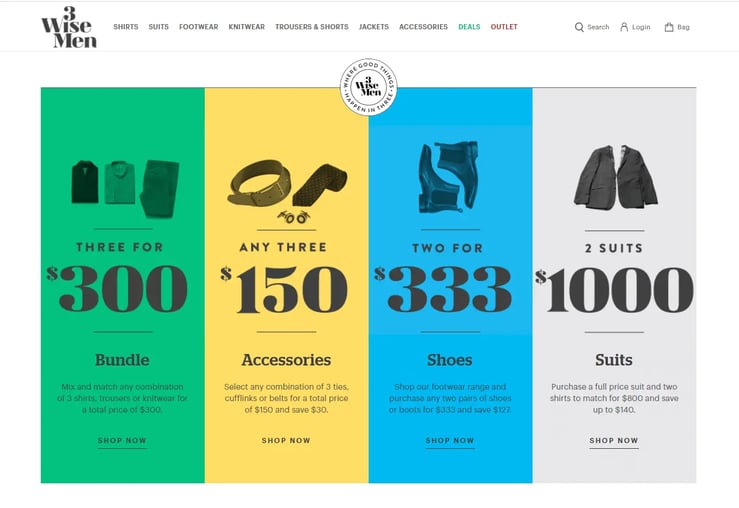
Now that you have the lowdown on how to bundle, let’s look at a few specific tips to help you execute this strategy and get it right the first time.
Tip 1: Give Different Bundled Packages for Your Products
When you provide a diverse range of bundles for your customers to select from, they'll gather ideas for how to use the products, which products to pair with their purchases, and how to resell these items if they choose to do so.
Tip 2: Emphasize Savings
One of the most attractive things about bundle sets is the products end up being less expensive as a bundle than when you purchase the products individually. This is good for consumers who are always looking for a buy that’s worth the money. So when you sell, use figures or percentages to emphasize exactly how much they can save with the bundle.
Tip 3: Offer Bundle Promotions at the Checkout Counter
Have you ever been offered a bundle by a cashier at a store? It might sound something like: "If you get a second item, your third is free." These offers happen to drive purchase intent and encourage you to make a quick decision on whether you want something that’ll make your purchase more worth your money.
This can also work wonders with regards to ecommerce selling. When a customer clicks on the Checkout button, the next page might display another product to add to your bundle and make their purchase more valuable (for less money). Once again, the key here is to add a product that is valuable to your target customer. Amazon has worked to perfect their product mix formula and is an example of an online marketplace that does this really well.
Tip 4: Display Bundle Sets
Make sure to display your bundle sets where your target customers can see them. Whether you’re selling through an online marketplace or an independent site, it’s important to showcase your bundles the moment your target viewer lands on your page. The more you promote your bundles, the more your potential customers will be exposed to them. This way, they can decide whether they want to take advantage of them or not.
Tip 5: Create a Separate Section for Value Packages
When selling on your website, try creating a separate page for your value packages. Any shoppers hunting for deals or looking to save a little money will flock to this section to check out your product bundles. Consider developing unique bundles that change over time, such as a ‘bundle of the week’ promo or even a ‘holiday bundle’ offering.
Bundling for Resellers
When we think of product bundling, we usually think about direct-to-consumer sales from a single label or brand. However, product bundling also comes into play when resellers are shopping for goods to display on online marketplaces like Amazon or eBay. These marketplaces can suggest bundles for you to create on your site, and then resellers can place bundle packages in separate posts from the original product listing.
One of the best things about reselling on Amazon or similar marketplaces is that you can bundle products from a number of different brands.
4 Examples of Successful Product Bundling
The biggest online brands are already benefiting from product bundling. Here are just a few examples for you to learn from:
1. Kylie Cosmetics
Kylie Cosmetics built an empire with a simple product concept: lip kits -- a clever name for a product bundle consisting of lipstick and lipliner in a single box. The brand grew from social media sweetheart to Shopify mega-success story ultimately resulting in a $600 million acquisition. Kylie Cosmetics continues to rely on a bundled product pricing strategy and has a dedicated section on their website highlighting the season's most popular bundles.
2. Naturebox
Naturebox is an innovative company that sells healthy snacks online. They often bundle different snacks together in one package to boost value for their customers' money. If you’re a health food enthusiast, Naturebox bundles are an awesome way to encourage healthy snacking. They also do promos and snack giveaways for those who enter their contests.
3. HelloFresh
HelloFresh sells ingredients that go into a healthy, home cooked meal. Theirs is actually an example of a successful pure bundle method that doesn’t seem like it’s a pure bundle. HelloFresh is known for packaging ingredients together that’ll make well-rounded meals, and it’s a very attractive option for anyone who has a health conscious lifestyle.
4. Amazon
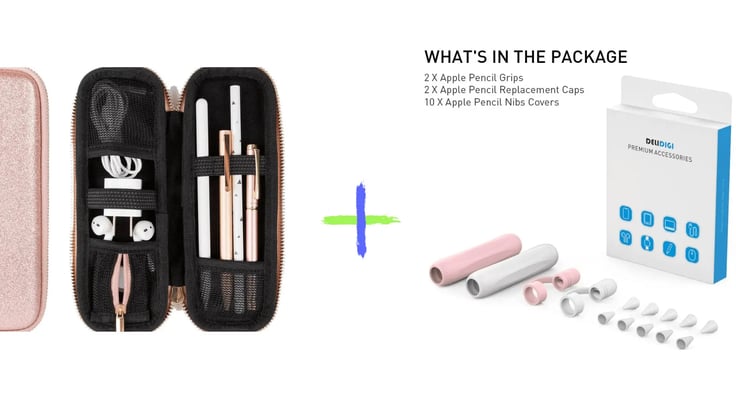

Amazon, as mentioned above, continues to perfect its algorithms for online sales. They've mastered the art of bundling and devised a way to suggest bundled products on their site (called Virtual Product Bundles). They’re able to make money this way since Amazon’s profits come from their sellers' revenue.
Why You Should Include Product Bundling in Your Sales Strategy
Product bundling is a trusted method for selling goods both in-store and online. As the art of selling has evolved over time, bundling products has steadily gained in popularity. Now, it’s more relevant than ever, due to the steep competition among ecommerce merchants and increases in customer acquisition prices.
With the online space growing increasingly crowded, entrepreneurs have to develop strategies to innovate their products and make them more attractive to potential clients. Product bundling is a true win-win, as it gives you the ability to sell items for less, while also making them more valuable than your competitors’ listings.
When done properly, offering a product bundle is an efficient way to boost sales and increase customer satisfaction at the very same time.
